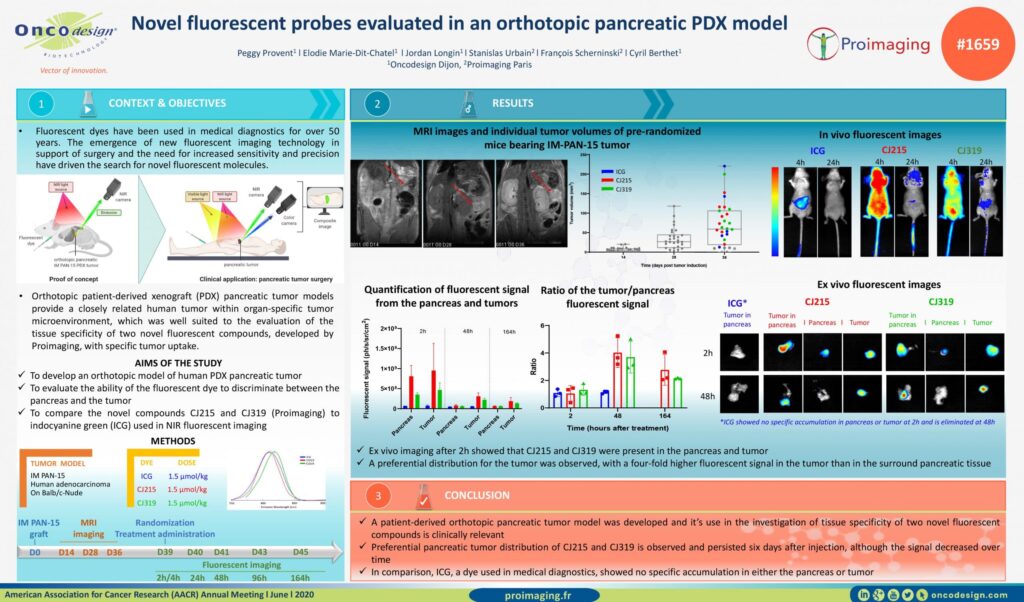Phone
+33 (0)1 76 54 08 64
Address
66 avenue des Champs-Élysées
75008 Paris – France
Authors: Peggy Provent, Elodie Marie-Dit-Chatel, Jordan Longin, Stanislas Urbain, François Scherninski, Cyril Berthet
Abstract: Fluorescent dyes have been used in medical diagnostics for over 50 years. The emergence of new fluorescent imaging technology in support of surgery and the need for increased sensitivity and precision have driven the search for novel fluorescent molecules.
Orthotopic patient-derived xenograft (PDX) pancreatic tumor models provide a closely related human tumor within organ-specific tumor microenvironment, which was well suited to the evaluation of the tissue specificity of two novel fluorescent compounds, developed by Proimaging, with specific tumor uptake.

The efficacy of fluorescence-guided surgery in facilitating the real-time delineation of tumours depends on the optical contrast of tumour tissue over healthy tissue. Here we show that CJ215—a commercially available, renally cleared carbocyanine dye sensitive to apoptosis, and with an absorption and emission spectra suitable for near-infrared fluorescence imaging (wavelengths of 650–900 nm) and shortwave infrared (SWIR) fluorescence imaging (900–1,700 nm)—can facilitate fluorescence-guided tumour screening, tumour resection and the assessment of wound healing...
The nuclear receptor, Nurr1, is critical for both the development and maintenance of midbrain dopamine neurons, representing a promising molecular target for Parkinson’s disease (PD)...
Cell-to-cell communication via tunneling nanotubes (TNTs) is a challenging topic with a growing interest. In this work, we proposed several innovative tools that use red/near-infrared dye labeling and employ lifetime-based imaging strategies to investigate the dynamics of TNTs in a living mesothelial H28 cell line that exhibits spontaneously TNT1 and TNT2 subtypes...
Proimaging